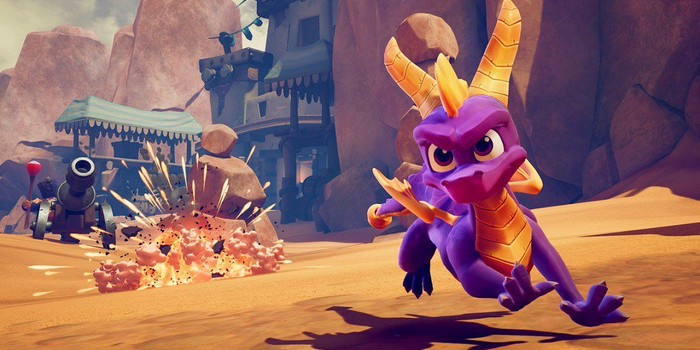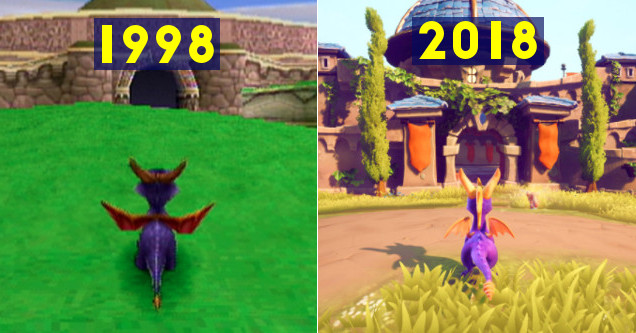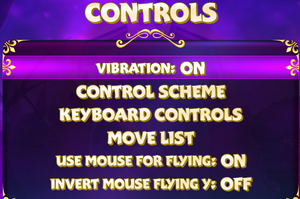
The late ‘90s marked a lot of changes in many sectors in the United States. But the technology, gaming, and computing sectors made a major leap back then. It was at this time that animation and gaming took center stage.
Many different players in the gaming industry provided cutting-edge gaming experiences through their new and upgraded consoles at the time. This heightened the competition at the time and so did the quality of the animation and game.
Around 1998, Spyro The Dragon came into existence. This was one of my favorite games back then. I guess it is just because I loved the looks and the antiques of the purple dragon. I could just not get enough of him.
Back then, we would play the game and look for cheats online for the entire weekend without getting tired or bored. The different stages of the game came with more adrenaline rush that made us play even more.
The Background History of the Spyro the Dragon platform game
Let’s get into details of this all-time classic game of the late ‘90s. The nostalgia around this game is too strong. I watched the walkthrough recently on YouTube and I couldn’t resist talking about the game.

Spyro the Dragon is a PlayStation platform game released in 1998 by Sony Computer Ent. And developed by Insomniac Games. Sparx, a dragonfly companion of Spyrot’s, joins him on a trip to destroy Gnorc, who has taken over the five dragon homeworlds by encasing the other dragons in crystal and creating an army of minions.
It's an open-ended 3D platformer in which the player must find various collectibles, such as gems, crystallized dragons, or stolen dragon eggs, in order to progress. When Spyro transforms into a dragon and unleashes his fire breath, head-on charging attack, and a mid-air glide, he must use these abilities to find things and defeat adversaries.
The development of Spyro the Dragon was spurred on by the dismal sales of Insomniac's first game, Disruptor, which was widely appreciated by critics and convinced Universal Interactive to commission a sequel. Work began on a new game after artist Craig Stitt suggested a dragon game.
An adult-oriented game with a gloomy and realistic style was originally planned for Dragonheart; however, the tone was lightened to appeal to a broader demographic of players. For the first time on PlayStation, Alex Hastings designed a panoramic engine that allowed the game's open-ended nature to be completely realized through the use of shifting levels of detail among depicted objects.
The game's soundtrack was composed by Stewart Copeland, a former drummer for The Police, while Carlos Alazraqui, the game's protagonist, was voiced by Clancy Brown, Michael Gough, and Jamie Alcroft.
Sony Computer Entertainment launched Spyro the Dragon in an effort to appeal to a younger population and to compete with the Nintendo 64, which was the more popular kid's platform at the time.
After a poor start, sales took off over the holiday season of 1998, and the album went on to sell approximately 5 million copies throughout the world. Gameplay and visuals were commended, however others noticed the game's low difficulty level. Spyro 2: Ripto's Rage! and Spyro: Year of the Dragon were published for the PlayStation in 1999 and 2000, respectively, and established Spyro as a well-known platforming mascot alongside Crash Bandicoot.
As a result of the PlayStation games' success, Insomniac relinquished its rights to the Spyro series, but this didn't stop the company from developing new games for other platforms. As part of the Spyro Reignited Trilogy, the game was rebuilt in 2018 alongside its two sequels.
Spyro the Dragon’s Gameplay and Walkthrough
Is Spyro a Skylander? This is the big question by most gamers. If you are one of them who is wondering whether you can still play Skylander, then this article is for you.

This is a 3D platform game, in which you take on Spyro’s role as he journeys across the Dragon World to battle the Gnasty Gnorc and save his fellow dragons. Six home worlds and each one serves as a central hub, with portals leading to other levels. It’s necessary to chat to a balloonist, whose hot air balloon takes Spyro to the next Homeworld when the user has collected all the requisite treasures.
Each Homeworld has a boss fight and hidden flight level that requires flying through a region and destroying a number of things. Spyro the Dragon’s stages are designed to be explored and filled with a variety of collectibles in order to proceed father in the game.
There is crystallized dragons in each stage, which Sypro must de-crystallize by treading on their statures bases. Once the dragon has been liberated, the player can use the dragon’s spots as save points and guidance on how to advance through the game. The dragons’ stolen treasure, in the shape of multicolored jewels, is another significant item to find throughout the game. Some of these jewels can be found inside adversaries, in breakable boxes and treasure chests; the amount of treasure obtained in a given stage is determined by the difficulty level.
It is necessary to track down and defeat thieves in order to recover dragon eggs that have been taken. The new world is unlocked if you find all of the collectibles in the game. Spyro’s arsenal of moves takes advantage of his dragon form. Spyro has two primary offensive moves: changing and breathing fire.
Spyro the Dragon Offensive Moves
Charging involves Spyro sprinting forward and ramming against objects with his head. Certain adversaries and situations need the employment of different attacks; for example, certain enemies have fireproof metal armor, which necessities charging, while larger enemies can only be attacked with Spyro’s fire breath since they would crush him otherwise.

Sypro’s wings allow him to glide through the air for longer distances and gain access to regions he couldn’t normally get to with a regular jump. Sparx, a yellow dragonfly who protects Spyro from harm and serves as the player’s healing system, is Spyro’s constant companion throughout the game. Whenever Spyro gets harmed by an obstacle, such as an enemy or by touching water, Sparx’s color changes, with yellow, blue and green indicating the amount of damage that Spyro will be spared. Once Sparx has disappeared, Spyro is vulnerable to losing a life if he is injured again.
Butterflies are found by killing sheep and other passive species that walk the levels. Sparx helps him collect stuff by snatching any gems that Spyro comes across.
Plot for Spyro the Dragon PS1
Five Homeworlds exist in the Dragon Kingdom: the Artisans, the Peacekeepers, the Magic Makers, the Beast Makers, and the Dream Weavers. These worlds have coexisted peacefully for a long time in harmony with one another.

After being exiled from the kingdom for his harsh temperament and thrown to an abandoned junkyard, Gnasty Gnorc hears an interview on TV with a couple of Artisan realm dragons and decides to investigate. In the broadcast, an unnamed dragon called Gnasty Gnorc is simple-minded, not a danger and ugly. This caused him to lash out rage, and he launched a full-scale attack on the kingdom.
The wizard uses his magical abilities to create a crystal shell for every dragon in the country, and he also steals the dragons’ prized collection of riches, transforming the precious stones into sly Gnorc warriors to aid him in his takeover of the dragon realms.
A juvenile purple dragon named Spyro is the only one to escape crystallization in the attack. Assisted by Sparx, Spyro sets out to find and fight Gnasty Gnorc, aided by his dragonfly buddy. Spyro travels to the worlds of the dragons, battling the troops of Gnorc sent to prevent him. In the process, he frees the crystalline dragons, who give him guidance and encourage him to rescue any stolen riches and dragon eggs that he comes across on his journey.
Spyro the Dragon How to Beat Gnasty Gnorc
His Journey eventually takes him all the way to Gnorc-world, at which point he finally faces up against the Gnorc-master and defeats him. The only way for Spyro to open Gnorc’s treasure portal is if he rescues every dragon in the kingdom, recovers their treasure, and restores the dragon eggs that have been taken during his mission.
Once you’ve collected everything in the treasure gateway, you’ll be able to access a special ending. Another spell is cast on the dragons, and Spyro sets out on another adventure in this conclusion, which is seen on television.
The Concept and How To Play Spyro the Dragon
Developed by Insomniac Games following the release of Disruptor in 1996, Spyro the Dragon was the company’s second game. After a commercial failure, the positive critical reception of Disruptor prompted Universal Interactive Studios to give them the green light for their next project.
Universal interactive studios president Mark Cerny urged that they build a game with a larger market appeal because the PlayStation demographics were dwindling and its range of children's titles was significantly outweighed by the Nintendo 64.
It was originally planned to be referred to as “Pete” but due to copyright issues over parallels to the Disney features “Pete’s Dragon”, the name was dropped. Following consideration of “Pyro” which was deemed too mature, they decided on Spyro instead.
Spyro’s character was designed by Charles Zembillas, who had previously worked on Crash Bandicoot’s design. To avoid him being mistaken for grass, the game’s designers originally planned to make Spyro green. While working on Spyro, Insomniac was neighbors with Naughty Dog, the studio behind Crash Bandicoot and another Playstation exclusive, who shared office space with them.
Playing early builds of one other’s games and later exchanging game technologies were common occurrences for the two devs. Because of this, both Spyro and Crash Bandicoot: Warped contains demos of each other’s games.
Design of Spyro the Dragon
When compared to other 3D platform games at the time, Spyro the Dragon was unique in that it allowed the player to span nearly a whole level by starting from a high enough point thanks to Spyro’s ability to glide.
Several playtesters reported felling queasy due to the nausea-inducing high-speed movements caused by the game’s early use of fixed camera behind Spyro. Compared to Whiting’s analogy of rocking a boat, Spyro’s basic jump resulted in the camera fast tiling up and down; this was eventually modified such that the camera remained static.
Imperative that Spyro’s programming be efficient in order to meet the PlayStation’s limited requirements, as 3D rendering technology was new at the time. Most of the game’s code was written in Assembly, while some were done in C for speed and simplicity.
Spyro the Dragon Graphic User Interface
At the time, Spyro the Dragon made use of a 3D panoramic engine designed by Alex Hastings, which could show distant objects with varying degrees of clarity. Because the technology may allow for more spacious levels that could take advantage of the character’s skills, such as gliding, the developers decided to use it.

One version of a level was produced in high resolution while the other was rendered in lower quality, textureless version. This dynamic method was utilized to complement big and sprawling settings. Nearby objects were rendered with the detailed render, whereas faraway objects were rendered with the simple render.
To get around PlayStation’s RAM limitation, it used a method that allowed objects to be displayed from a distance while still maintaining clarity. Colors, light and shade were provided through vertex shading in this game, which relied solely on the method to show clouds and other distant details without relying on textures. To avoid the approach from oversaturating the base textures, they were purposefully maintained slightly desaturated.
Spyro the Dragon Audio Settings
Stewart Copeland, the drummer for the British band The Police, created and produced the game’s soundtrack. At the beginning of the game’s development, Copeland was given early versions of the game’s stages so he could play them and compose a suitable soundtrack.

As a result, he was given Spyro the Dragon game cheats like invincibility, which made it easier for him to go through the game. Every day, Copeland penned four new songs, all of which he refined the next day. In the game, Copeland claims, each song corresponded with a specific level, but this association was never utilized.
For his work on Spyro, Copeland has praised it, calling the game’s soundtrack among his best works back then. Spyro’s voice was performed by Carlos Alazraqui, while Clancy Brown, Michael Gough, Jamie Alcoroft, and Michael Connor provided additional voices. In an interview with Electronic Gaming Monthly, Alazraqui revealed that he intended to make Spyro’s voice sound like a child at camp that everybody enjoys. Tom Kenny took over Alazraqui’s position in the sequel after he left the first game.
Final Thoughts
Back in the late ‘90s, I was a mad fan of Spyro the Dragon. Fast forward to the year 2022, Spyro the Dragon cannot compete favorably with the latest advanced games that come with online and virtual capabilities. I would love to see Spyro the Dragon joining the virtual world. This will be an awesome addition to the game.
What is your memories of Spyro the Dragon game?
Did you get a chance to play the game back in the late ‘90s to early 2000s?

